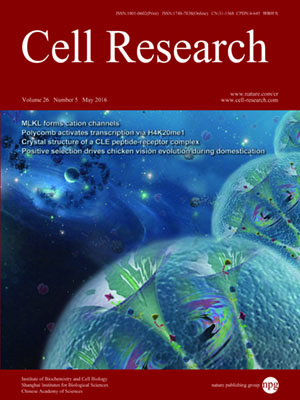
Volume 26, No 5, May 2016
ISSN: 1001-0602
EISSN: 1748-7838 2018
impact factor 17.848*
(Clarivate Analytics, 2019)
Volume 26 Issue 5, May 2016: 633-636
LETTERS TO THE EDITOR
One-step homozygosity in precise gene editing by an improved CRISPR/Cas9 system
Pei Zhao1,2,*, Zhe Zhang1,*, Xiaoying Lv3, Xiang Zhao1, Yuji Suehiro4, Yinan Jiang3, Xinquan Wang3, Shohei Mitani4, Haipeng Gong3 and Ding Xue1,5
1School of Life Sciences & Collaborative Innovation Center for Diagnosis and Treatment of Infectious Diseases, Tsinghua University, Beijing 100084, China
2Tsinghua University-Peking University Joint Center for Life Science, Beijing 100084, China
3School of Life Sciences, Tsinghua University, Beijing 100084, China
4Department of Physiology, Tokyo Women's Medical University, School of Medicine, and Core Research for Evolutional Science and Technology (CREST), Japan Science and Technology Agency, Tokyo 162-8666, Japan
5Department of Molecular, Cellular, and Developmental Biology, University of Colorado, Boulder, CO 80309, USA
Correspondence: Ding Xue,(ding.xue@colorado.edu)
The CRISPR/Cas9 gene editing method has been successfully applied to modify genomes in many organisms1. However, several critical issues remain unresolved and have become major hurdles for its broad applications1. First, editing efficiency varies widely at different genetic loci and some targeted sites are resistant to editing for unknown reasons. Even for the same gene, editing efficiency differs greatly at different positions. Second, generation of undesirable insertions or deletions (InDels) at the target sites constitutes a major issue in precise genome editing and gene therapy. Third, one-step homozygosity in precise gene editing is extremely rare and is highly desirable for genetic and functional analyses, especially in systems where genetic manipulations are not possible or are tedious and time-consuming, such as cultured cells and mammals.
10.1038/cr.2016.46
FULL TEXT | PDF
Browse 2439


